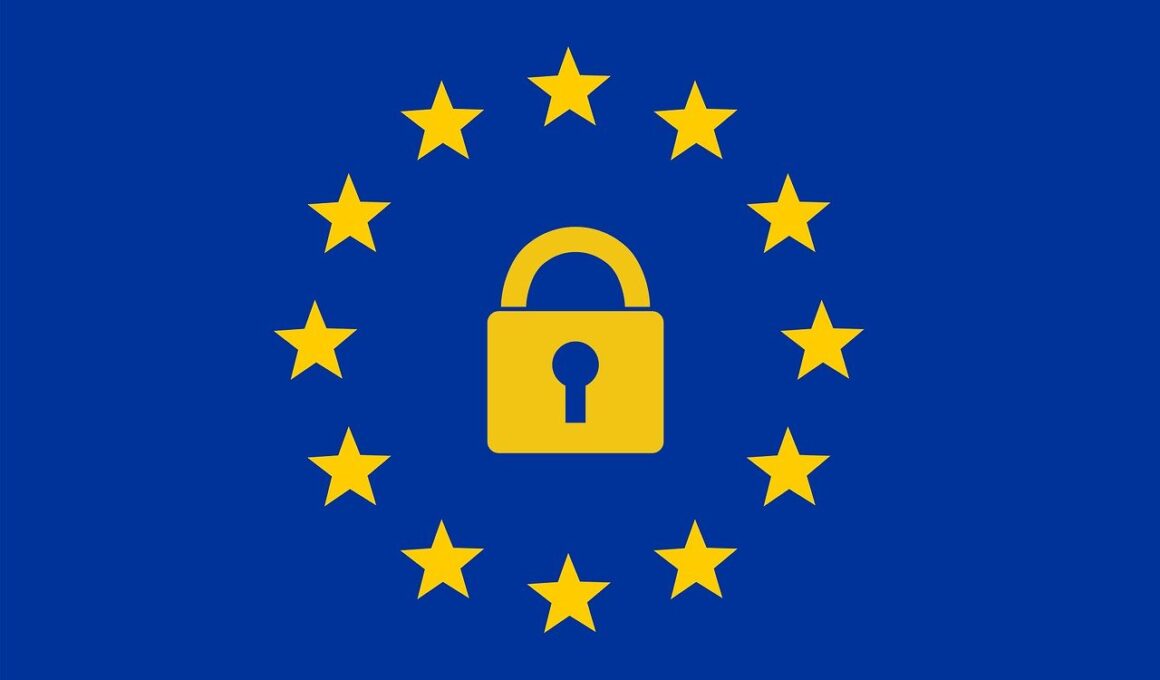Push Notification Compliance and Regulation Overview
Push notifications are crucial for engagement, but compliance with regulations is necessary. It ensures both user trust and legal adherence. Many jurisdictions enforce rules that direct how businesses must handle push notifications. These rules often revolve around consent, transparency, and user data protection. For instance, GDPR in Europe necessitates explicit consent from users before sending communications. This means that users should have opted-in willingly, understanding what notifications entail. Companies can face significant penalties if they fail to comply with such regulations. Additionally, CCPA in California provides its own set of requirements. Organizations must clearly define how they collect and use personal information through push notifications. To manage compliance effectively, businesses should develop clear privacy policies and communication practices. Educating teams involved in marketing and technology is vital to ensure they understand these regulations thoroughly. Partnering with legal experts can help organizations navigate the complex landscape of data protection laws. Regular compliance audits can also identify potential risks in push notification strategies before they become problematic. By implementing these practices, businesses can enhance their notification strategies while maintaining regulatory adherence and user satisfaction.
The primary challenge in push notification compliance involves obtaining user consent properly. Users often need to be made aware of the value of notifications to ensure they willingly opt-in. When requesting consent, clarity is essential; businesses must inform users about what types of messages they will receive. Furthermore, the consent process should not be buried within long terms and conditions. Users should have a straightforward means of opting in or out whenever they choose. Offering incentives may help to increase opt-in rates, as users appreciate clear benefits from agreeing to receive notifications. Transparency is also key; notifications should include relevant information about how user data will be used. Companies should only collect data that is necessary for providing those notifications effectively. Additionally, regular reminders about privacy practices can reinforce trust. Providing users with control over their notification preferences can lead to better engagement. Users should have options to manage their preferences easily, changing notification types or turning them off altogether whenever they desire. This dynamic engagement approach fosters brand loyalty, enhancing user experience while respecting individual rights wherever possible.
Understanding Key Regulations
Several key regulations influence how businesses manage push notifications. Familiarity with these regulations is significant for compliance. GDPR governs European Union member states and sets stringent rules regarding personal data. Under its guidance, gaining explicit consent means users must agree freely and affirmatively before receiving notifications. Similar principles appear in the CCPA, which emphasizes data collection transparency and user control. Organizations must inform users about their right to delete personal data. Compliance with these regulations is not optional, and businesses must be proactive. For companies operating globally, understanding the nuances of regional laws becomes critical. Not meeting these compliance requirements can lead to harsh penalties affecting bottom lines. Consequences of non-compliance extend beyond financial implications; reputational damage can also occur, eroding public trust. Thus, a robust compliance strategy is essential to navigate the complex landscape. Financial investments in compliance may seem cumbersome initially, but they often prove worthwhile long-term. Ultimately, regulated push notifications positively influence engagement while enhancing overall user trust. Strengthening compliance can encourage recipients to embrace notifications, fostering fruitful connections between brands and users.
Another pivotal component of push notification compliance involves data protection practices. Organizations need robust measures to protect user data collected through notifications. Businesses should employ security protocols that safeguard user information against unauthorized access and breaches. Regularly updating these security measures is essential, especially as cyber threats evolve. Businesses must also implement responsible data storage policies. Encrypted data storage solutions minimize risk and ensure sensitive information remains protected. Moreover, informing users about how their data is stored and safeguarded can enhance transparency, solidifying trust further. Participating in regular training sessions for employees can ensure they are aware of compliance and data protection practices. When employees understand the significance of data protection, they are more likely to adhere to policies. This culture of compliance can help stave off potential breaches. Effective privacy practices contribute significantly to maintaining user engagement levels. Engaging users positively can lead to higher rates of interaction, ultimately benefiting brands. Encouraging feedback about notification preferences allows businesses to tailor strategies effectively. Continually retaining user input maximizes relevance, keeping connections strong between brands and their audience.
Strategies for Effective Compliance
To ensure compliance, developing a structured approach is paramount. Organizations should start by creating comprehensive privacy policies regarding push notifications. These policies need to outline how user data is collected, used, and protected. Regularly updating and reviewing these policies is necessary as regulations evolve. Additionally, organizations must invest in training employees on these practices. Holding workshops that emphasize compliance and the importance of user data can be particularly beneficial. Each team member in marketing and technology needs an understanding of why compliance matters. Implementing consent management tools can streamline the process and ensure adherence. These tools help companies track user consent and preferences efficiently, leading to improved user experiences. Furthermore, conducting compliance audits at regular intervals can help identify areas for improvement. Using feedback from these audits can be valuable, allowing organizations to pivot strategies where necessary. These proactive measures contribute to a culture of compliance within the organization. Businesses should always strive to maintain open communication regarding how they utilize push notifications. Transparency and user engagement are pivotal for optimizing effectiveness while maintaining compliance and regulations governing notifications.
The frequency of push notifications is also an essential consideration for compliance. Overly frequent messages can lead to user fatigue, prompting individuals to opt out. Aligning notification frequency with compliance involves understanding user preferences and expectations. Regularly analyzing engagement data can guide businesses concerning optimal notification timing. Simply put, users appreciate when companies send relevant messages at appropriate intervals. Leveraging analytics tools helps ensure that notifications are sent neither too frequently nor too infrequently. Ensuring users can control frequency preference is essential. This control reinforces trust and allows them to manage their experiences according to personal preferences. Push notifications should deliver genuine value to users, prompting them to engage meaningfully. Thus, businesses must prioritize sending relevant content that aligns with user needs. By balancing notification frequency with user engagement insights, companies can enhance overall satisfaction. Effective strategies aimed at optimizing engagement while ensuring compliance foster healthier relationships. Brands can bolster loyalty while still adhering to applicable regulations at all times. Striking the right balance creates a positive cycle of effective push notifications and retention.
Looking to the Future
As digital communication evolves, push notification laws will likely adapt as well. Innovating compliance strategies to stay ahead of these changes is essential for businesses. As user privacy concerns continue to grow, regulations will evolve to address these mounting challenges. Organizations should stay informed about shifts in legal landscapes and evolving user expectations. Proactive adaptation demonstrates a commitment to user integrity while significantly bolstering engagement initiatives. Engaging with legal professionals can provide valuable insights into upcoming changes in regulation that could affect push notifications. Furthermore, early adaptation may offer a competitive advantage in the marketplace. As expectations change, businesses that prioritize transparent communications will resonate with users effectively. Future approaches should focus on creating innovative notification strategies, ensuring that they comply with any emerging regulations. Leveraging data analytics will support these ongoing efforts, helping to design personalized notifications that align with user expectations. This personalization inherently fosters positive user experiences. Anticipating shifts in regulations and adjusting accordingly will position organizations favorably in the future landscape of digital notifications.
In conclusion, effective push notification compliance and regulation strategies involve multiple factors. Ensuring user consent, prioritizing data protection, and maintaining transparency constitute core principles for success. Businesses that establish clear communication practices while adhering to regulations build trust among their audience. Investing time and resources into compliance strategies ultimately creates a dynamic user experience. Nurturing relationships through well-crafted notifications increases engagement and promotes loyalty over time. As regulations expand, shifting strategies to accommodate new compliance challenges will be crucial. Understanding how to navigate the regulatory landscape positions companies for success in extending their push notifications. Companies committed to building compliance practices will benefit from both user satisfaction and business growth. Overall, effective compliance should remain an ongoing priority for organizations engaged in push notification strategies. Companies that combine innovation, user experience, and compliance hold the keys to improving engagement rates significantly. Push notification compliance may seem complex, but with the right approach, organizations can ensure robust engagement strategies while respecting user rights always. Thus, a clear focus on compliance will ultimately lead to satisfied users and enhanced growth prospects.


